Of the many beautiful and interesting bookstores that Ken White designed, perhaps the true “jewel in the crown,” was the Boston University Bookstore. It was the most elegant bookstore he designed.
In 1982, the Boston University administrators engaged Ken White Associates to design a new and different kind of bookstore in an unused 6-story building owned next to to the University on Boston’s Kenmore Square. Anyone familiar with the city of Boston will immediately recognize the building at 660 Beacon Street as the location of the iconic Citgo sign.
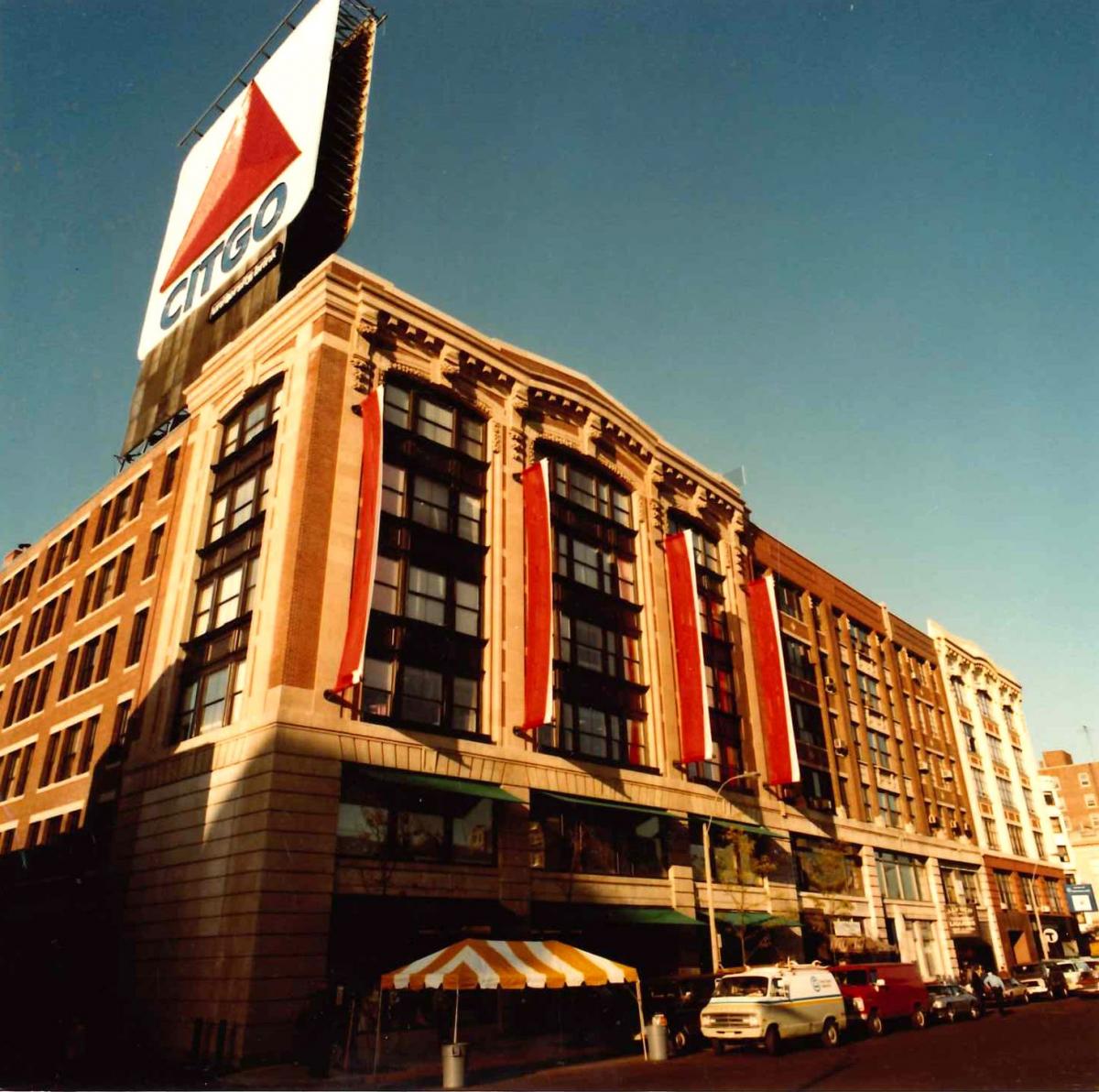
In nine months, White and his associates created not only one of the largest bookstores in New England, but also a bookstore with clothing, computers, cameras, and food departments to serve many other student needs, as well as a Viennese-style café where patrons could enjoy a cup of coffee or other beverage and a pastry. The store was also intended to attract non-students looking for books, particularly newly-published works, which they could find in the well-stocked bookstore.
The bookstore opened to many accolades in October 1983 with a first-night gala champagne reception attended by approximately 3,000 guests, including many celebrities.
When one first walked into the store from the street, there were no books to be seen. The first floor housed clothing, gifts, and other small shops, and looked very much like a mall or upscale department store. In fact, Boston University students fondly nicknamed it “BUmingdale’s.” The various shops and departments gave a relaxed feel to the book-buying experience for the diverse customer base.
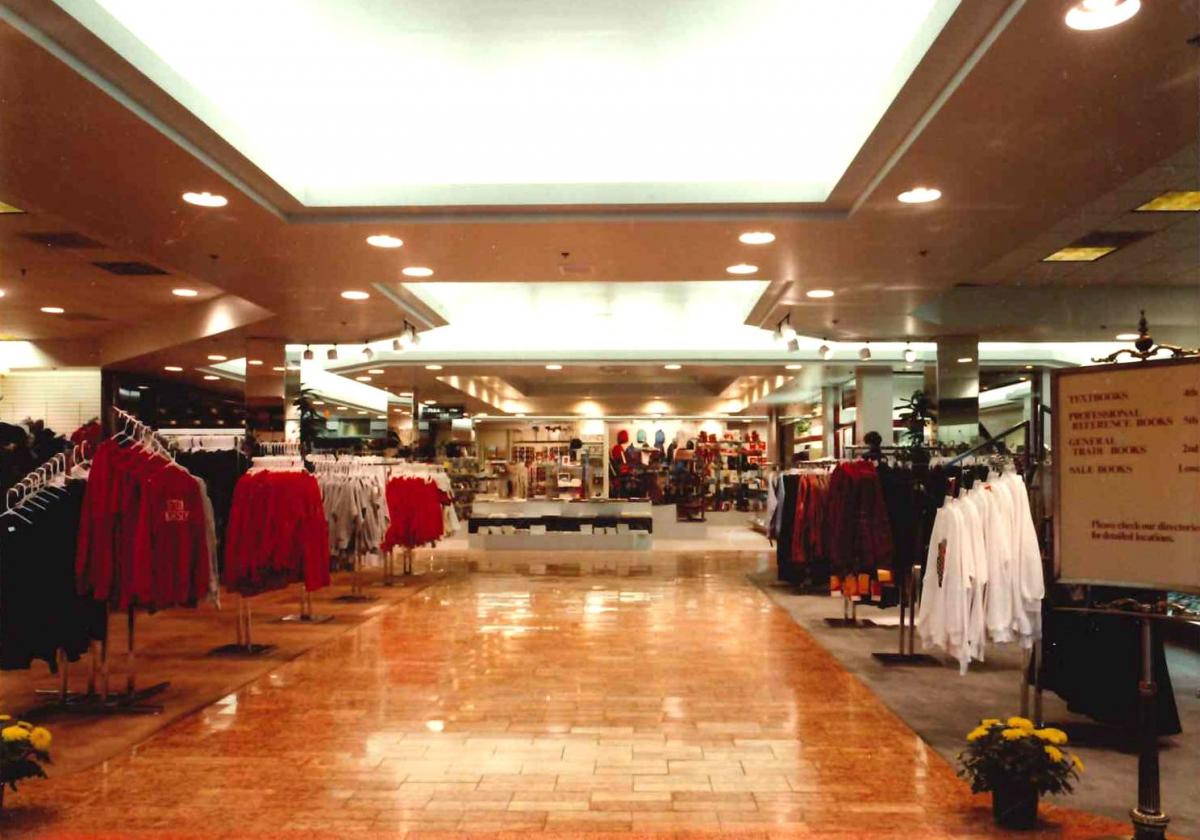
But when customers ascended the escalator to the second floor, they were greeted by a striking 19th-century English Regency-style entrance to the Charles Bank Bookshop. Each book department on that floor, and the floors above, featured a beautiful, custom-designed neo-classical portal. The lobbies and interiors of the departments had chandeliers in decorative medallions, classical moldings and columns, and oriental rugs on the floor with traditional-style chairs, tables, and desks. There were stained-glass and circular windows on the various floors and even a Heidelberg window in the Scholarly Book department on the second floor.
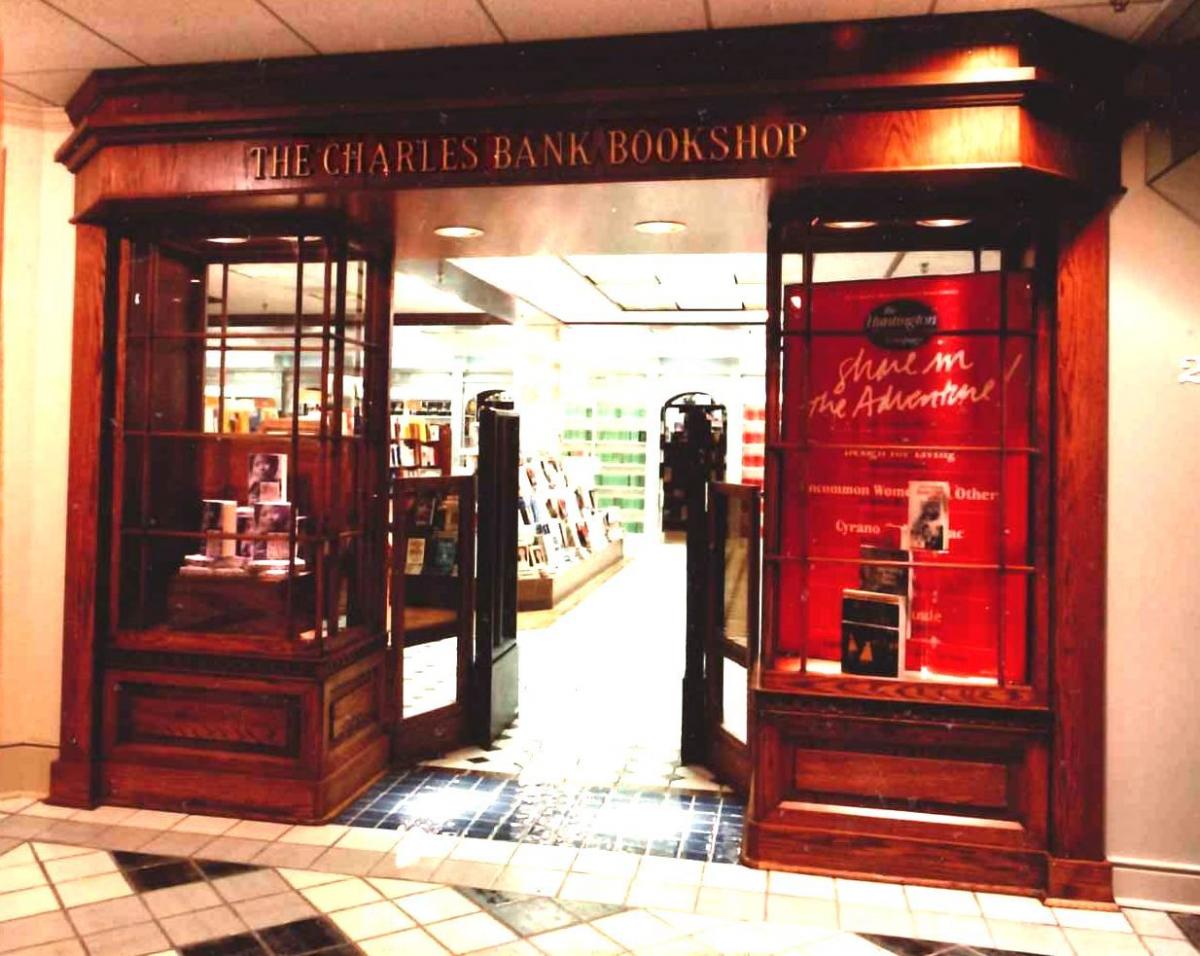
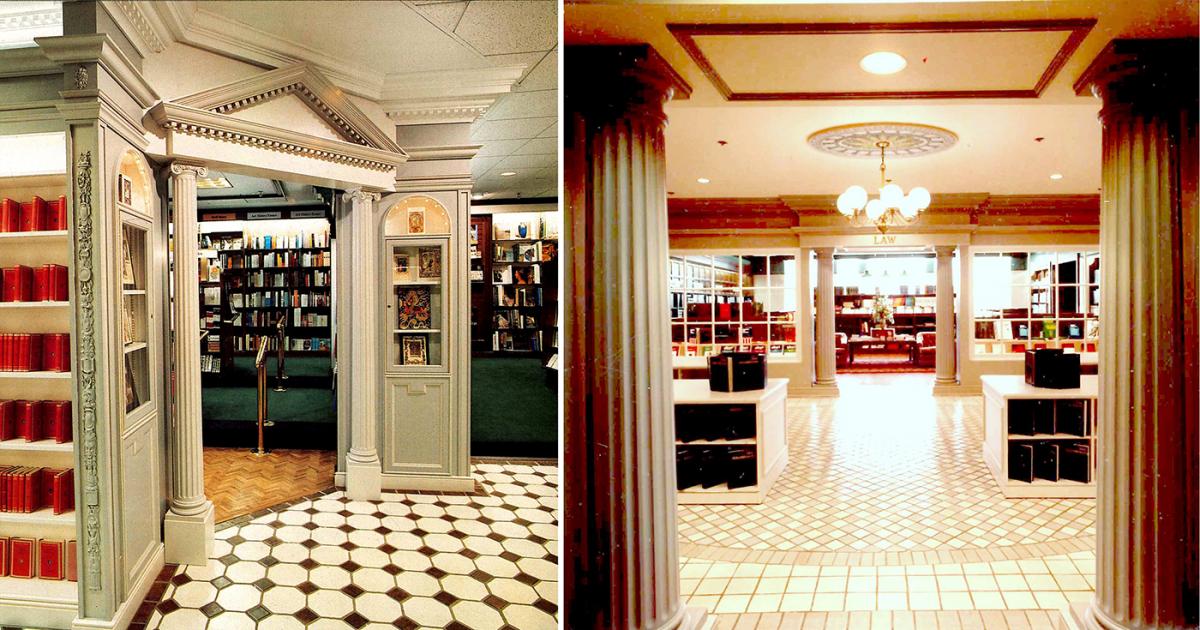
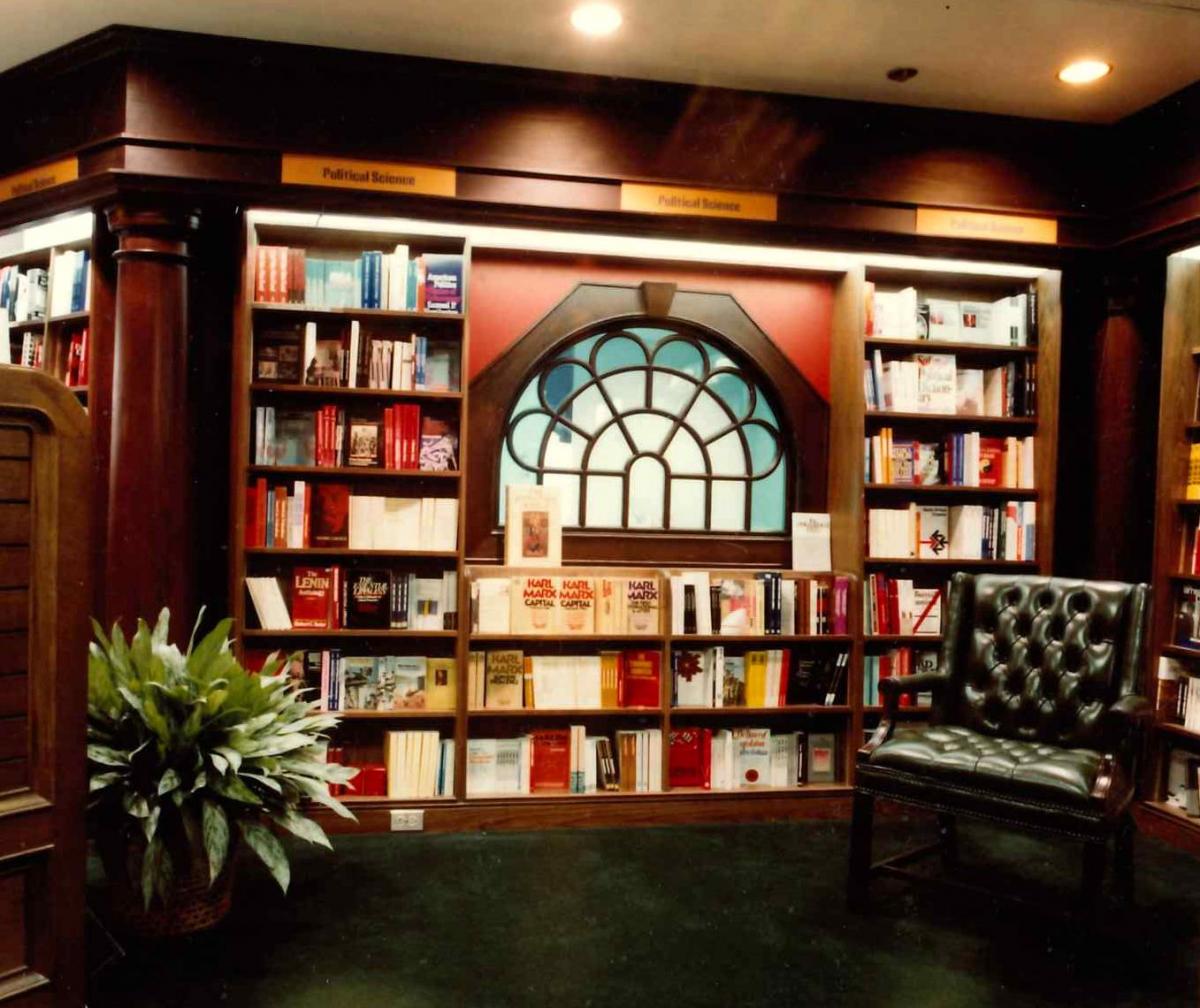
The Boston University officials were ecstatic about their new bookstore, which was exactly what they had envisioned, as it reflected the architecture and furniture styles so well-loved in Boston. Newspapers and numerous periodicals like the American Bookseller, Boston Magazine, The College Store Journal, Publishers Weekly, and Visual Merchandising & Store Design featured the bookstore in articles with rave reviews, reprinted as a booklet by Ken White, titled Boston University Bookstore (which was helpful in writing this article).
The Ken White Collection contains the records for every stage of the store’s creation, from the first correspondence and meetings, to the numerous preliminary drawings, final plans by White and various sub-contractors, and beautifully watercolor elevations (one of which was featured in the August 2018 news post on the Ken White Collection) for all six floors, as well as articles and other kinds of documentation. These records demonstrate the enormous amount of work that went into the finished project. But with White’s oversight and attention to detail, the final product was a “World Class College Store,” as White and many others enthusiastically described it.
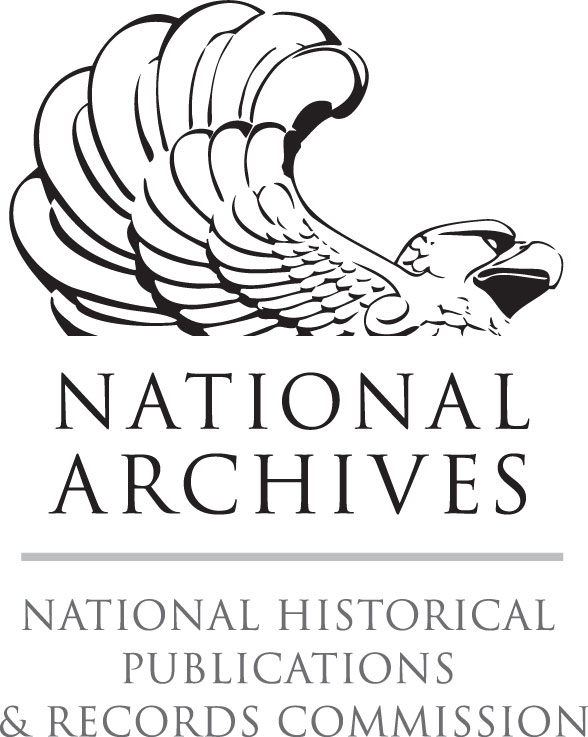
Gail Stanislow is a Project Archivist at Hagley Museum and Library.
